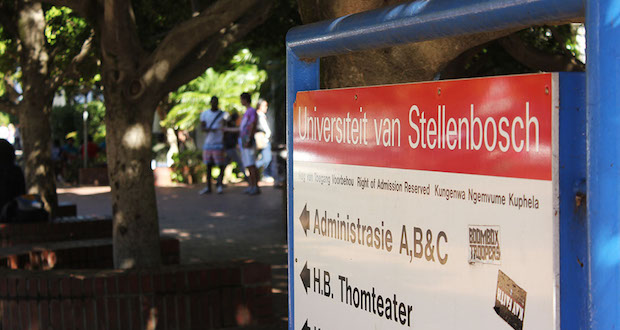Black students at a number of former white universities in South Africa have started one of the most necessary youth conversations in a long time. From the University of the Witwatersrand to Rhodes University to the University of Cape Town, the youth are taking up a topic that has not been effectively broached in institutions of higher learning since the mid-1990s.
The transformation imperative has remained a formal agenda item at most South African universities, but it has always remained at a level of lip service, a talk-shop, rather than fundamental change. Now black, educated youth seem to be once more reclaiming voices stifled for so long under the slow, reformatory transformation process that has unfolded since 1994; youth rage is being unleashed on our campuses.
When a black student throws faeces at the statue of Cecil John Rhodes, it comes from a place of rage, rage against the forms of institutional racism that students have been told to live with.
When Rhodes University students use social media to speak about their own experiences of racism, it speaks to this rage against the silencing of black students implicitly enforced at an institution imbued with colonialism.
The protests over the past few weeks at UCT have targeted a symbol of racism, a statue, but they speak of a much broader failure in higher education since 1994 and a much deeper problem of exclusion.
Having been a student leader at Wits University, I know all too well the consistently frustrating pace of transformation at our institution. Wits, like most other former white universities, has a deep-seated, institutional and systemic form of racism that is swept under the carpet.
When we spoke of racism, we were often asked “What racism?†because Wits University accepts more black students than others and has more black students on university funding.
But even without the symbols of racism – like a glorified statue of Rhodes in the middle of campus – Wits still has a fundamental institutional bias.
In a university that is dominated by black students it is easy to go through a humanities curriculum without meeting one African, female lecturer and without learning anything outside of a deeply Eurocentric curriculum.
This is why a group of postgraduate students at Wits last year submitted a transformation memorandum to the university that deals with demands concerning curriculum and staff transformation.
The failure of the transformation project is not a new phenomenon, nor is this the first generation of students to have encountered the problem. In the 1990s students waged similar struggles on campuses to deal with transformation, the need for institutional reform and redress. Yet still, the problem of institutional racism prevailed.
So, how does the slow transformation process impact tangibly the life of an institution?
The curriculum reinforces an uncritical perspective that is drenched in colonial interpretations. It is also easy to see, from throughput rates at these universities, that black students, who often have not had the same quality of schooling as their white counterparts, lack adequate institutional support and often perform worse that white students. Academic and financial exclusions at most universities also, on average, affect black students more than white students.
Furthermore, you see fewer black postgraduate students – partly because of socioeconomic circumstances outside of universities which force them to enter the workforce earlier, rather than to remain in academia. This also speaks to the failures of universities to take the conditions of black students seriously.
To move away from students for a moment, all of the institutions mentioned in this article use, and justify the use of, a system of outsourced labour on campuses, exploiting black workers for the sake of cutting costs.
Many black students have had to come to terms with the fact that, despite their relative privilege at universities, they do not benefit from the structures of the academy in the same ways as white students.
The Rhodes statue at UCT has opened up a contemporary discussion about fundamentally transforming our academic institutions. Student leaders have been fighting many of these battles behind closed doors since 1994, but this has now spilled over in a seemingly productive manner.
Once the symbols – the statues and names – have been removed from our campuses, the same rage that we see now, must be focused on the heart of these academies. That will be real battle to transform the often invisible structures and mechanisms that sustain institutional racism.

![Rhodes Statue at UCT straight centered [slider]](https://www.thedailyvox.co.za/wp-content/uploads/2015/03/Rhodes-Statue-at-UCT-straight-centered-slider.jpg)








